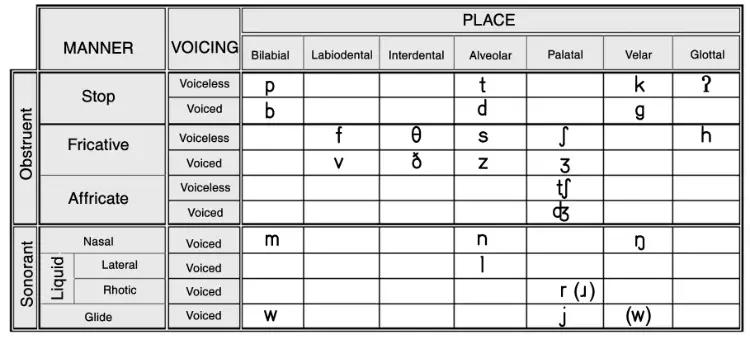
For many learners of English, one of the hardest things to grasp about the language is its pronunciation. Not only are there many accents to get accustomed to – American, British, Australian, among others – but there are many fundamental sounds within the language that can be difficult to produce.
To make things even worse, English’s spelling system is horrendous and seldom a reliable indication – even for native speakers – of how to pronounce most word.
Because of this, it’s useful to try to depict the pronunciation of the English language through a set of symbols besides the Latin alphabet – namely, the International Phonetic Alphabet. Known as the IPA for short, this phonetic system might be familiar to you, and in my experience, it’s a useful tool for learning any language.
The great thing about the IPA is that its symbols are meant to be universal. This means that if you learn the set of symbols used for English sounds, you can apply them to most other languages you might want to learn, from French to Arabic to Japanese.
It is not a perfect system, since its details can only be so fine, and nuances like tone and stress are often overlooked in IPA transcription, which can be a bit of a problem with tonal languages like Mandarin and Vietnamese.
However, for our purposes with English, these phonetic symbols can definitely come in handy if you’re looking to improve your pronunciation.
CONSONANTS
The first set of symbols presented here represents consonant sounds. Most are fundamental to English pronunciation regardless of accent. Since you might be unfamiliar with some of the terms used to describe the sounds, here are some definitions you might find useful:
Voiced: a voiced sound is a sound where the vocal cords vibrate, thus producing some sort of pitch. This is the kind of sound most people associate with regular talking or singing.
Voiceless / unvoiced: a voiceless or unvoiced sound is one where the vocal cords do not vibrate, thus making the sound very whispery and without a pitch. It can tend to make a letter sound harsher when pronounced.
Stop: a consonant sound where the airflow is stopped completely by the mouth and then sharply released. Think of sounds like “p,” “k,” and “t.” All languages contain stops.
Fricative: a consonant sound where the airflow becomes noisy and turbulent because it only has a very small space to travel through in the mouth. Think of sounds like “f,” “s,” and “sh.” Most languages have fricatives, but not all.
Nasal: a consonant sound where the airflow passes exclusively through the nose instead of the mouth. Think of sounds like “m,” “n,” or “ng.” Almost all languages have nasals.
Affricate: a consonant sound that begins like a stop but then releases like a fricative, thus making it a sort of combination sound. Think of sounds like “ch” and “j.” Affricates are common, especially in English.
Alveolar ridge: a ridge found on the roof of the mouth between the upper teeth and the hard palate, which is used in conjunction with the tip of the tongue to make many sounds
Soft palate: the soft tissue in the back of the roof of your mouth, which is used In conjunction with the back of the tongue to make many sounds
/p/
Voiceless stop made with both lips
Found in words like: pen, spin, tip, happy
Letters that usually represent it: “p”
/b/
Voiced stop made with both lips
Found in words like: but, web, baby
Letters that usually represent it: “b”
As you may have noticed, the only difference between producing /p/ and /b/ is the voicing, while all other factors remain the same.
It’s common, including in English, to have pairs of words that are essentially the same, except one is voiced and the other is unvoiced. If you’re having trouble pronouncing certain sounds, try to identify a corresponding sound with a different voicing as a reference.
/t/
Voiceless stop made with the tip of the tongue on the alveolar ridge
Found in words like: two, sting
Letters that usually represent it: “t”
/d/
Voiced stop made with the tip of the tongue on the alveolar ridge
Found in words like: do, daddy, odd
Letters that usually represent it: “d”
/k/
Voiceless stop made with the back of the tongue on the soft palate
Found in words like: cat, kill, skin, queen, unique, thick, chaos
Letters that usually represent it: “k,” “c,” “q,” “que,” “ck,” sometimes “ch”
/g/
Voiced stop made with the back of the tongue on the soft palate
Found in words like: go, get, beg, bigger
Letters that usually represent it: “g”
/f/
Voiceless fricative made by putting your upper front teeth on your lower lip
Found in words like: fool, enough, leaf, off, photo, glyph
Letters that usually represent it: “f,” “ph,” sometimes “gh”
/v/
Voiced fricative made by putting your upper front teeth on your lower lip
Found in words like: voice, have, of, over
Letters that usually represent it: “v,” sometimes “f”
/θ/
Voiceless fricative made by putting your tongue between your teeth
Found in words like: thing, teeth, Athens
Letters that usually represent it: “th”
If you’re curious about this symbol, it comes from the Greek letter “theta,” which makes the same sound in Greek.
/ð/
Voiced fricative made by putting your tongue between your teeth
Found in words like: this, breathe, father
Letters that usually represent it: “th”
You might have noticed that both /θ/ and /ð/ are represented by “th” in English. Although sometimes there are rules as to when a letter or letter cluster makes different sounds, there really is no rule for “th.”
Sometimes it’s voiced, and sometimes it’s unvoiced, and you’ll just have to memorize the difference as you come across each word with a “th” in it. This letter seems to be based off of the Greek letter “delta,” which makes the same sound in Greek.
/s/
Voiceless fricative made by putting the tip the tongue nearly on the alveolar ridge
Found in words like: see, city, pass, lesson
Letters that usually represent it: “s,” sometimes “c”
/z/
Voiced fricative made by putting the tip the tongue nearly on the alveolar ridge
Found in words like: zoo, rose, clothes, asthma
Letters that usually represent it: “z,” sometimes “s,” rarely “th”
/ʃ/
Voiceless fricative made by putting the tip the tongue a little bit past the alveolar ridge
Found in words like: she, sure, session, emotion, leash
Letters that usually represent it: “sh,” “si,” “ti,” sometimes “s,”
/ʒ/
Voiced fricative made by putting the tip the tongue a little bit past the alveolar ridge
Found in words like: genre, pleasure, beige, equation, seizure, vision
Letters that usually represent it: “g,” “si,” “ti,” “z,” sometimes “s”
/tʃ/
Voiceless affricate made with the tip of the tongue on the alveolar ridge
Found in words like: chair, nature, teach
Letters that usually represent it: “ch,” sometimes “t”
This is one of the two affricates in English, the other being /dʒ/. As stated in the definitions above, an affricate is a combination of a stop and a fricative, so the “ch” sound is actually represented by two IPA symbols. The same goes for the “j” sound.
/dʒ/
Voiced affricate made with the tip of the tongue on the alveolar ridge
Found in words like: gin, joy, edge, did you, judgment
Letters that usually represent it: “j,” sometimes “g,” “dg,” sometimes “d”
/h/
Voiceless fricative made by a forced breath through the glottis
Found in words like: genre, pleasure, beige, equation, seizure, vision
Letters that usually represent it: “g,” “si,” “ti,” “z,” sometimes “s”
/ʔ/
Glottal stop made by shutting and releasing airflow through the glottis
Found in words like: uh–oh, kitten, Manhattan, bet, important (American)
Letters that usually represent it: “t,” “-,” the beginnings of vowels
You might be a little confused by this backwards-question-mark-looking symbol, but the best way to hear and feel it is to say the word “uh-oh.” You’ll feel your vocal cords close for just a moment in order to block your airflow, which is what linguists call a “glottal stop.”
You can also feel this stop happen every time you begin to pronounce a vowel without a consonant before it. The glottal stop is common in some British accents, but it’s especially common in American accents, where the letter “t” is often replaced by this sound in the middle and ends of words. Yes, it’s true.
Most Americans don’t pronounce “kitten” with such a strong, harsh /t/ in the middle, but rather with a /ʔ/ instead.
/m/
Nasal sound formed while the lips are shut
Found in words like: man, them, hammer
Letters that usually represent it: “m”
/n/
Nasal sound formed while the tip of the tongue is on the alveolar ridge
Found in words like: no, tin, winner
Letters that usually represent it: “n”
/ŋ/
Nasal sound formed while the back of the tongue is on the soft palate
Found in words like: ringer, sing, finger, drink
Letters that usually represent it: “ng,” sometimes part of “ng,” part of “nk”
The letters “ng” can be problematic because the /ŋ/ sound is sometimes followed by a /g/ sound, but sometimes it isn’t. Note the difference between “singer” and “finger,” where “finger” has that extra /g/ sound, but “singer” doesn’t.
This difference is random and should be memorized, just like the “th” phenomenon, but there are a few tricks that can help. For example, if a word ends in “ng,” then there is never a following /g/ sound. There also is no /g/ sound if the word ends in “-ing,” which turns verbs into participles or gerunds.
/ɾ/
A momentary stop-like sound called a flap or tap, caused by the tip of the tongue lightly throwing itself against the alveolar ridge
Found in words like: better, hidden, hater, odor
Letters that usually represent it: “t,” “d”
This is another sound that might confuse you. This is because it’s primarily found in American accents and is essentially another way that Americans become lazy with the letter “t.” You saw previously that the glottal stop is a way to replace the /t/ sound in the middle and ends of words.
However, Americans sometimes use the flap instead in the middle of words, though note that the /ʔ/ and /ɾ/ sounds are mutually exclusive. For example, an American would pronounce the word “button” with a /ʔ/ in the middle, but not a /ɾ/. Meanwhile, “better” is pronounced with a /ɾ/ but not a /ʔ/, at least in an American accent.
/ɾ/ is actually the letter “r” in many other languages like Spanish, Korean, and Arabic (the symbol even looks like some degenerate letter “r”). In terms of sound, consider it to be a softer version of /d/, which is why the letter “d” is often replaced by it, too.
/x/
Voiceless fricative made by putting the back of your tongue nearly on your soft palate
Found in words like: loch (Scottish), ugh
Letters that usually represent it: “gh”
This is an interesting sound because it is not actually a standard sound in English. However, it is easy for most English speakers to make, and occasionally shows up in oddball words like “ugh,” where the /x/ sound is almost an extra marker of exasperation.

ALMOST CONSONANTS?
So far we have seen sounds that are, for the most part, unmistakably consonants. At this point, you might think we’d move onto vowels. However, there are some sounds that seem to share characteristics of both consonants and vowels.
Already, you have seen the nasals /m/ and /n/, which almost act like vowels but up in the nasal cavity. But in the IPA, there is another class of sounds called “approximants” that lie somewhere between vowels and consonants. Two categories within these approximants are known as “glides” and “liquids.”
Glides are sounds that are phonetically similar to vowels but function more as consonants, while liquids are sounds in which the tongue creates a partial closure in the mouth, resulting in a vowel-like sound.
/l/
Liquid created by keeping the tip of the tongue on the upper teeth
Found in words like: left, bell, table, please
Letters that usually represent it: “l”
Though the /l/ symbol is used for the “l” sound in most European languages, the sound in English is a little bit different in that the tip of the tongue touches the teeth rather than other places of the mouth like the alveolar ridge.
This is what gives the “l” that fuller, arguably uglier quality, almost like you’re about to swallow your tongue. In British English, the tip of the tongue tends to touch the alveolar ridge instead.
/ɹ/
Liquid created by curling the tongue backward toward the back of the mouth. The tip of the tongue should not be touching any part of the mouth.
Found in words like: run, very, probably, far, earnest
Letters that usually represent it: “r”
The /ɹ/ sound is arguably one of the most difficult English sounds for foreigners to grasp. Although it is found in almost all accents of English, it is most common in American accents.
For example, even though an American would typically pronounce the “r” in “car,” but a British person wouldn’t, both speakers would usually pronounce the “r” in “grow.”
Notice that /ɹ/ is actually an upside-down letter “r.” The /r/ can sometimes be used to replace /ɹ/ when the language is assumed to be English, but the actual /r/ symbol is a trilled “r,” like in the Spanish word “perr”
/j/
Glide created by bringing the middle of the tongue very close to the roof of the mouth, and then releasing
Found in words like: yes, neuron, cube
Letters that usually represent it: “y,” sometimes other vowels
Though /j/ seems like it is the vowel /i/ but shorter, the tongue is tenser in this sound so that it can be brought closer to the roof of the mouth.
If pronounced correctly, you should be able to pronounce the word “year” and hear a distinction between the /j/ sound and the vowel after it. The letter “u” also tends to be pronounced with the /j/ sound in certain words, such as “cute” or “pure.”
/w/
Glide created by pursing the lips closely together, and then releasing
Found in words like: we, queen, Huang, lower
Letters that usually represent it: “w,” sometimes “u”
VOWELS
Though there are many consonants in English (and in general), much more than can be individually represented by the 26 letters in the alphabet, vowels can sometimes be even harder to describe.
While consonants can at least be described with precise terms and actions, vowels tend to be more of approximations in the IPA. This is because vowels tend to lie more on a spectrum than consonants, and also because vowels can change subtly from accent to accent and from language to language.
However, these subtleties can make a noticeable difference to our ears. Because I personally am an American English speaker, I am most familiar with the standard American accent (General American) and some of its variations, as well as the standard British accent (Received Pronunciation).
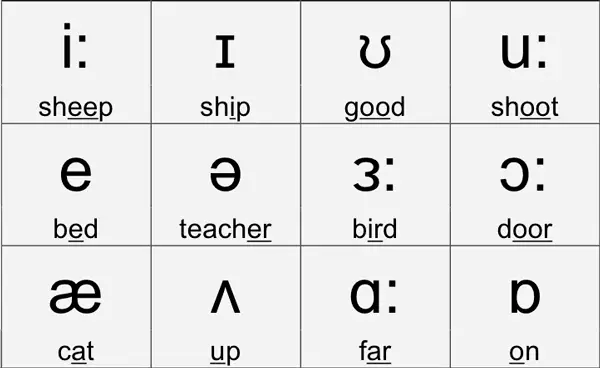
So some of the following examples will mostly serve as a way to get you familiar with some of these IPA symbols. But even the same symbol can represent slightly different vowels, since, as mentioned before, vowels tend to lie on a spectrum.
Really, it is best to use your ears to listen to how English is spoken by different people, and then compare that to the IPA symbols.
Three major factors in the production of vowels are the openness, or height, of the mouth, the position of the tongue, and the roundness of the lips.
- If a vowel is produced while the mouth is almost closed, it would be considered a close If the vowel is slightly more open, it would be considered a mid vowel. And if the mouth is open very tall, it would be considered an open vowel.
- If the tongue is positioned near the front of the mouth, any vowel produced would be a front If the tongue were set slightly more back in the mouth, the vowel would be a central vowel. If the tongue were set in the far back of the mouth, the vowel would be a back vowel.
- If a vowel is produced while the lips are tense and rounded, it would be considered a rounded. If the vowel is produced while the lips are relaxed, it would be considered an unrounded vowel.
In order to better visualize these differences, it’s helpful to look at a chart. Think of the following chart as a diagram of the mouth facing left sideways, where the position of the tongue traces along the different points to produce different vowels.

/æ/
Found in words like: cat, lad, bat
Letters that usually represent it: “a”
/ɑ/
Found in words like: off, loss, cloth (General American)
Letters that usually represent it: “o,” “a”
Notice that this symbol is different from the symbol /a/, which some people pronounce in the word “father.” However, the symbol has been omitted from this list.
/ɔ/
Found in words like: law, caught, all, talk
Letters that usually represent it: “a,” “aw,” “au,” “al”
At least in the General American accent, this is an interesting sound because it’s starting to fall out of usage. For example, there used to be a clear geographical distinction in the United States between people who pronounced the words “cot” and “caught” the same and those who pronounced with different vowels (/ɑ/ and /ɔ/).
These days, however, there is a much blurrier distinction between these two pronunciations, and many more Americans are beginning to pronounce both “cot” and “caught” with the /ɑ/ vowel. This is what linguists call the “cot-caught merger” and is an example of how certain sounds are currently dying out of English pronunciations.
/ə/
Found in words like: about, the, spotted, lemon, basil, analysis, acumen
Letters that usually represent it: almost any vowel
This symbol is known as the “schwa” and is often called the neutral vowel. Technically, it is the “mid central unrounded vowel,” and in English, it is only used for unstressed vowels. Stressed vowels that make a similar sound are represented by the /ʊ/ symbol.
What’s interesting about the schwa is that almost any vowel letter in English can make this sound, probably because it is the neutral vowel, and therefore a logical go-to for any vowel that becomes weakened from a lack of stress.
/ɪ/
Found in words like: sit, hidden, amiss
Letters that usually represent it: “i,” “y”
/i/
Found in words like: city, see, meat, theme, fluorine, people
Letters that usually represent it: “ee,” “ea,” “y,” “i”
This is one of the few IPA symbols where its uppercase counterpart is a separate symbol. Notice the difference between /i/ and /ɪ/.
/ɛ/
Found in words like: bed, instead, friend
Letters that usually represent it: “e,” “ea”
In Australian and other accents, this sound is replaced entirely by the /e/ sound, which is a more close, front vowel and has a brighter sound.
/ɹ̩/ or /ɚ/
Found in words like: burn, herd, earth, bird, worm, amateur, winner (General American)
Letters that usually represent it: “er,” “ear,” “ir,” “or,” “ur,” “eur”
These two symbols feature diacritics, which are small markings added to IPA symbols to modify their sounds. The small notch placed beneath the /ɹ/ symbol indicates that it can constitute its own syllable without the help of a vowel. Meanwhile the little tail added to the schwa colors it with the /ɹ/ sound.
/ɜ/
Found in words like: burn, herd, earth, bird, worm (Received Pronunciation)
Letters that usually represent it: “er,” “ear,” “ir,” “or,” “ur,” “eur”
Not to be confused with the /ɛ/ symbol.
/ʌ/
Found in words like: run, won, flood, sudden, alumnus
Letters that usually represent it: “u,” “o,” “oo”
/ʊ/
Found in words like: put, look, would
Letters that usually represent it: “oo,” “oul,” “u”
Remember that this sound is very similar to the schwa sound, but it is typically reserved for stressed syllables.
/u/
Found in words like: tube, you, choose, through, threw, issue
Letters that usually represent it: “oo,” “u,” “ou,” “ew”
In a broad transcription (general use of the IPA) of English, it is acceptable to simply use the /u/ symbol alone.
However, it is more accurate to use this symbol for sounds such as the “u” in the Spanish word “tú” or “luna,” where the vowel is much purer than in English. For a narrower transcription in English, you can use the symbols /ʊu/ or /əu/, depending on the accent.
/o/
Found in words like: no, toe, soap, throw, though
Letters that usually represent it: “o,” “oe,” “oa,” “ow”
Similar to /u/’s case, this symbol is acceptable to use in a broad transcription of English, but it really represents the sound that “o” makes in the Spanish word “hola” or “gato.”
In English, the “o” is sound is typically more of a diphthong and can be represented with something like [oʊ]. In Australian English, the sound is more of an [ɔʊ].
DIPHTHONGS
So far, we have seen mostly symbols for pure vowels, and with these symbols, we can represent almost any sound made in common accents of English. However, English is a language known for being full of diphthongs (double vowels) that are represented by combinations of symbols.
Examples already given for this are [ʊu] and [oʊ], but there are many more. Here are the most common examples:
/aj/
Found in words like: my, wise, high, Thai, island
Letters that usually represent it: “i,” “y,” “igh,” “ai”
In Received Pronunciation, the diphthong is more of a /ɑj/ sound.
/ej/
Found in words like: date, day, pain, whey, rein, neighbor
Letters that usually represent it: “a,” “ay,” “ai,” “ey,” “ei,” “eigh”
In Received Pronunciation, this diphthong is more of a /ɛj/ sound.
/ɔj/
Found in words like: boy, noise, Euler
Letters that usually represent it: “oy,” “oi”
Oftentimes, this is pronounced as /oj/ instead.
/aw/
Found in words like: now, trout, Laos
Letters that usually represent it: “ow,” “ou”
Americans often pronounce this as a /æw/ sound.
/ju/
Found in words like: cute, ewe, use, new (in some accents), you
Letters that usually represent it: “u,” “ew”
Though the /j/ sound can be combined with mostly any vowel, it appears very often before the /u/ sound, even without the appearance of the letter “y.”
NARROWER TRANSCRIPTION
The IPA symbols presented here are probably enough to be overwhelming to any language learner, or a nice review for anyone already familiar with the system. However, the symbols alone do not cover nearly every facet of English pronunciation.
You’ve already encountered a couple diacritics that slightly change the nuances of certain sounds, but there are plenty more that can be useful in English. Though I won’t go too in depth with them, here are a few more IPA features, just to give you a general idea of what they do.
1. BRACKETS
As transcription becomes narrower, or more precise, it is more common to use brackets to surround IPA symbols than slashes, which you have noticed already. The reason for this is a distinction between phonetics and phonemics, but that’s a topic of linguistics beyond the scope of this article.
2. STRESS
Sometimes, an apostrophe is placed before the syllable that is primarily stressed in the word. For example, the word “because” would be transcribed as /bəˈkʌz/ with the apostrophe before the second syllable. If there is a secondary stress in the syllable, then you would use a symbol that looks somewhat like a comma.
For example, “pronunciation” would be written as /prəˌnʌnsiˈeɪʃən/. It is typical to transcribe IPA using stress markers, though it is not always required.
3. LENGTH
You might have heard of long vowels and short vowels as a feature of languages such as Finnish, Japanese, or Ancient Greek. However, English also features length in its vowels, though in a subtler way.
Think of the difference in vowel length between “city” and “clean.” To mark a vowel as long, linguists use a colon-like symbol. For example, “clean” would be written as [kliːn], while “city” would remain [ˈsɪti] (or [ˈsɪɾi], if you’re American).
Note, though, that this is characteristic of a narrower transcription of English and therefore seldom required. Though in other languages, vowel length can affect the meaning of certain words, in English, it does not.
4. SYLLABIC CONSONANTS
A syllabic consonant is a consonant that can act as a syllable without the help of a vowel, and is indicated by a small notch below the IPA symbol.
You’ve already seen this with /ɹ̩/, but /l/, which is also a liquid, as well as nasals like /m/ and /n/ can become syllabic. For example, the word “table” features a syllabic consonant and is therefore written as /ˈtejbl̩/. Similarly, the word “hidden” can be written as /ˈhɪɾn̩/.
However, an alternative to this convention is to use the schwa, since it serves as a neutral vowel. Thus, “hidden” can be transcribed as both /ˈhɪɾn̩/ and /ˈhɪɾən/.
5. NASALIZATION
In some accents, especially American accents, the /æ/ vowel is not always completely pure. When it comes directly before a nasal consonant, it becomes a bit distorted, or “nasalized,” as if it is anticipating the consonant that comes after it.
For example, though a British person would say the word “man” with a clean /æ/, an American would nasalize the /æ/, making it sound almost like an [eə] sound. To indicate nasalization, you can put a tilde above the vowel, so /mæn/ would become [mæ̃n].
6. ASPIRATION
Aspiration is the breathiness given to a consonant, typically a voiceless stop, making it sound harsher. If you hold your hand up to your face and pronounce the word “pan,” you might feel a burst of air come from your mouth.
Now, pronounce the word “span,” and notice that some of that breathiness might go away. This is the phenomenon of aspiration, and it makes a huge difference in the meaning of Korean words, for example.
However, it is not such a big deal in English, which is why the indication of aspiration in IPA is considered part of a narrower transcription. It is indicated by a small “h” next to the IPA symbol, so a sound like /t/ would become [th] in most cases.
8. UNRELEASED STOPS
It is also typical for stop sounds to not have a release when they occur at the ends of words. For example, even though /p/ is typically aspirated as [ph], when it comes at the end of a word like “stop,” the sound has no audible release and there is no sound of aspiration.
To represent this, we would write /p/ as [p ̚]. With the /t/ sound in American English, it becomes so extreme that it is replaced entirely by a glottal stop.
More for you:
English Accent: How to Sound Like a Native English Speaker
Punctuation Marks – Quotation Marks – Question Mark
20 Most Common Math Terms and Symbols in English



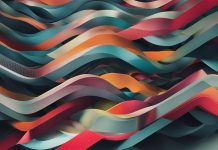


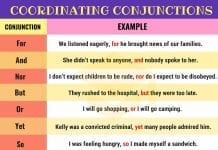
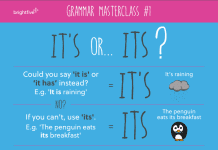
















The best explanation I could have got.Thanks myenglishteacher.eu and the wordsmith.You people always do great work. 👍
😃Thank you! ❤️
The best chart in english vowal sound .
But the one problem
The simbol to explian to hindi and english ..
So study asan ho ga ge bhi yo
I am looking for the phonetic symbol that looks like an elongated s and what sound it represents